Let's start with an example to illustrate the importance of knowing what a digital marketing funnel is.
Let's say a promising SaaS startup launched their product with a polished website, a well-produced explainer video, and a decent ad budget. They had a free trial option, a strong value proposition, and what they believed was everything they needed for traction.
But a few months in, traffic was steady, and trial signups were trickling in, yet conversions to paid users remained stubbornly low. Frustration set in. Why weren't visitors taking that final step?
The team was missing something crucial: a strategic funnel.
They assumed that every visitor was ready to buy, but most weren't even problem-aware. Without TOFU content to attract the right audience or MOFU content to build trust and answer objections, the product was invisible in the early stages of the customer journey. Their leads were dropping off long before they ever reached the conversion point.
Contrast that with another SaaS company that mapped out a complete funnel strategy. They began with educational blog content targeting pain point searches like "how to automate lead follow-ups" (TOFU), followed by a gated ebook on sales workflows (MOFU), and finally led users into a tailored demo experience with social proof (BOFU). Their conversions steadily climbed because their funnel supported every step of the buying process.
A digital marketing funnel turns fragmented tactics into a guided journey. It ensures that your content meets potential customers where they are—whether they're just starting their search or ready to make a decision—and moves them smoothly toward becoming loyal users.
Let's examine the funnel, its structure, and, most importantly, how you can use it to convert cold traffic into paying customers.
What is a Digital Marketing Funnel?
A digital marketing funnel is a visual representation of the journey your prospects take from first discovering your brand to becoming loyal customers. It maps the stages of awareness, interest, consideration, and conversion.
Each stage of the funnel requires different content strategies, tactics, and content types. At the top, you're casting a wide net to attract prospective customers. As people move through the funnel, your marketing becomes more targeted and personalized, with the goal of turning browsers into buyers.
Think of it as the framework for your entire marketing strategy.
The Funnel's Role in Marketing Strategy
The marketing funnel isn't just a content framework; it's more like a strategic blueprint that connects your marketing efforts to measurable business outcomes. Without it, marketing campaigns often become scattered and inconsistent, leading to wasted budget and missed opportunities.
A strong funnel strategy enables:
- Structure and focus: Marketers can prioritize high-impact content and avoid random acts of marketing. Knowing which stage you're creating content for keeps messaging on track and aligns with customer intent.
- Lead nurturing: Leads rarely convert on the first interaction. The funnel gives you a step-by-step system for delivering value, building trust, and guiding prospects from curiosity to commitment.
- Sales and marketing alignment: A shared funnel framework ensures that marketing hands off high-quality, sales-ready leads at the right time. This alignment improves conversion rates and shortens the sales cycle.
- Data-driven decisions: Every funnel stage can be measured. You can analyze content performance, lead conversion rates, and drop-off points to optimize where it matters most.
In practice, this means marketers can set clear KPIs at each stage—like organic traffic and engagement for TOFU, lead magnet conversions for MOFU, and demo sign-ups for BOFU—and tie those metrics directly to revenue impact.
For example, a SaaS company may identify that MOFU content (like a competitor comparison page) is responsible for the highest-value leads. With that insight, the team can double down on mid-funnel offers and even create personalized versions for specific industries.
A modern funnel strategy should also account for AI-based content discovery. Google has fully integrated AI Overviews into search results, and more and more people are using AI tools as a complement to search engines—a recent survey by Higher Visibility found that 71.5% of people use AI tools for search, and 14% of those people use them daily. Other major marketing information sources, like SEO Roundtable and TechRadar, report similar shifts in search habits. These stats are compelling because they show just how quickly AI is influencing how people find and consume information, highlighting how important it is for marketers to take note and adjust their content strategies accordingly.
As AI search becomes more prevalent, ensure your content is:
- Well-structured and easy to scan
- Explicitly answers common user questions
- Supported by trusted data and citations
- Optimized with schema markup for rich snippets
These steps increase your chances of being cited or referenced by AI platforms like Google's AI Overviews or ChatGPT's browsing tools. With the rise of zero-click search and conversational AI interfaces, showing up in the AI layer of search could be the new front door to your funnel.
A modern funnel strategy should also account for AI-based content discovery. As AI search becomes more prevalent, ensure your content is:
- Well-structured and easy to scan
- Explicitly answers common user questions
- Supported by trusted data and citations
- Optimized with schema markup for rich snippets
These steps increase your chances of being cited or referenced by AI platforms like Google's AI Overviews or ChatGPT's browsing tools.
Stages of the Digital Marketing Sales Funnel
There are three core stages in most funnels: TOFU (Top of Funnel), MOFU (Middle of Funnel), and BOFU (Bottom of Funnel). Each represents a different mindset and level of intent.
|
Funnel Stage |
Purpose |
Audience Mindset |
Content Examples |
|
TOFU |
Raise awareness |
"I didn't know this was a problem until now." |
Blog posts, infographics, explainer videos, social posts |
|
MOFU |
Build trust |
"I need to fix this, but which option is best?" |
Case studies, webinars, ebooks, comparison guides |
|
BOFU |
Drive conversion |
"I know what I want, but is this the right choice?" |
Demos, pricing pages, free trials, consultations |
Top of the Funnel (TOFU): Awareness
At the awareness stage, your goal is to introduce your brand to people who are unfamiliar with it. These are individuals or businesses experiencing symptoms of a problem, but they haven't yet identified a specific solution.
A strong TOFU strategy begins by creating helpful, educational content that doesn't immediately push a product. For example:
- A B2B SaaS company might publish a blog post like "5 Ways Manual Data Entry Is Costing Your Team Time" to highlight a pain point without promoting their automation software right away.
- A B2C e-commerce brand selling skincare could create a TikTok series about "Common Mistakes in Your Nighttime Routine."
To increase discoverability on AI platforms, ensure your content:
- Uses clear headers that match common queries (e.g., "What is manual data entry?")
- Is formatted with bullet points, numbered steps, or concise definitions
- Links to authoritative sources when referencing data
You move people to the next stage by building credibility and offering helpful next steps, like subscribing to a newsletter or downloading a free guide.
Middle of the Funnel (MOFU): Consideration
Now that you have potential customers' attention, it's time to deepen the relationship. In the consideration stage, prospects are actively researching how to solve their problems. They compare vendors, look for proof, and evaluate features.
This is where your content shifts to more detailed, problem-solution focused assets. Consider these examples:
- A B2B example might be a CRM provider offering a webinar on "How to Scale Sales Without Burning Out Your Team," complete with a case study showing real ROI.
- For a B2C example, an eco-friendly mattress brand could offer a downloadable comparison guide: "Memory Foam vs Latex—What's Right for You?"
To surface well in AI recommendations, make sure MOFU content includes structured comparisons, FAQs, and clearly labeled sections that align with the way AI parses and summarizes data.
Strategic follow-ups and middle-funnel CTAs (like "Book a Free Strategy Call") help nudge prospects toward the final decision.
Bottom of the Funnel (BOFU): Conversion
BOFU is where all your nurturing pays off. Prospects here are close to purchasing but need the last bit of confidence and clarity to convert.
This stage is all about reducing friction. Show them what the next step looks like, make it easy to take, and remove doubt with social proof and guarantees. For example:
- A B2B company might offer a custom demo call tailored to the prospect's use case, followed by a proposal.
- A DTC brand might send an email offering a limited-time 20% discount and a link to a product demo video featuring real customer testimonials.
When optimizing for AI platforms, ensure BOFU content:
- Includes direct answers to transactional questions (e.g., "How much does it cost? What's included?")
- Highlights customer success stories in digestible formats
- Features structured data for reviews, pricing, and FAQs
BOFU content should answer final objections and make the decision feel like a no-brainer. When supported by remarketing campaigns and strong sales alignment, the transition from interest to conversion becomes seamless.
Types of Content for Each Funnel Stage
Effective funnels deliver the right content at the right stage to keep potential customers moving through to a conversion.
Here's a quick reference table summarizing the most effective content types for each stage:
|
Funnel Stage |
Content Types |
|
TOFU (Awareness) |
Blog posts, infographics, explainer videos, social media content |
|
MOFU (Consideration) |
Case studies, webinars, ebooks, comparison guides |
|
BOFU (Conversion) |
Product demos, pricing pages, free trials, consultations |
Awareness Stage (TOFU)
At the TOFU stage, your content should aim to educate and intrigue. This isn't the time to pitch; it's the time to demonstrate empathy for your audience's challenges.
Use storytelling and relatable pain points to catch attention. Blog posts should clearly define the problem in simple language and provide valuable insights—think of it as a helpful guide, not a sales pitch. Infographics can work particularly well on platforms like Pinterest or LinkedIn, where quick visuals can drive engagement. Meanwhile, explainer videos help demystify complex topics and boost time on-site.
This is also where AI optimization matters: break up your content with headers that mirror how people ask questions, and keep definitions short, scannable, and packed with value. If AI assistants are scanning your page, make it effortless for them to extract direct answers.
The goal? Create content that builds trust and encourages a small commitment, like reading a related article, downloading a free resource, or subscribing to your newsletter.
Consideration Stage (MOFU)
In the MOFU stage, you're nurturing curiosity into genuine interest. Content should provide in-depth solutions and position your brand as a credible authority.
The purpose is to educate your leads on why your product or service is a great fit, without hard selling. Webinars allow you to demonstrate thought leadership and address objections in real time. Ebooks and whitepapers offer a deeper dive into industry challenges and solutions, establishing trust through data and expertise. Case studies provide social proof by showing how others have succeeded using your solution.
Also, consider optimizing content formats to be AI-friendly: use structured data and clearly labeled sections so AI can better summarize your value propositions.
The endgame for MOFU content? Inspire confidence and encourage leads to take the next step, whether it's booking a consultation, attending a live demo, or diving deeper into a comparison page.
Conversion Stage (BOFU)
This is where your content should shift from persuasive to reassuring. BOFU prospects are ready to buy, but also looking for reasons not to. Your job is to eliminate doubt.
At this stage, high-converting content includes personalized demos, transparent pricing pages, risk-free trial offers, and strong testimonial sections. Make this content frictionless to access—remove unnecessary steps and streamline CTAs.
To improve AI visibility, format pricing and feature breakdowns in table form, include schema markup for reviews, and directly address common last-mile questions (e.g., "Is there a setup fee?"). This ensures your answers surface in AI tools where buyers might be searching.
Ultimately, BOFU content should make your offer seem obvious and easy to accept. Pair it with remarketing campaigns and live chat to tip undecided leads over the edge.
Aligning Marketing Strategies with the Funnel Stages
You know the funnel stages. Now let's map strategy to them.
TOFU Marketing Strategies
- SEO content marketing: Focus on publishing helpful, keyword-targeted blog content that answers top-of-funnel queries. This might include listicles, how-to articles, and educational pieces like "What Is Customer Churn and Why It Happens." Use schema markup and internal linking to enhance visibility in both search engines and AI-generated overviews.
- Social media engagement and awareness ads: Platforms like Instagram, LinkedIn, and TikTok are great for pushing out visual, snackable content that introduces your brand. Consider running brand awareness campaigns with broad targeting to spark curiosity.
- Influencer campaigns: Partner with thought leaders or micro-influencers who already engage with your target audience. Their endorsement provides instant credibility and reach.
- Google Ads targeting broad keywords: Use broad match or phrase match targeting for terms with informational intent. For example, a software tool might target "project management tips" or "ways to improve team productivity."
MOFU Marketing Strategies
- Lead nurturing through drip email campaigns: Use marketing automation to deliver value over time. For instance, a series of emails after downloading a guide could include educational content, mini case studies, and personalized recommendations.
- Retargeting ads to re-engage site visitors: Set up retargeting audiences based on site behaviors like viewing pricing pages or time on-site. Serve content that deepens engagement, such as webinar invites, ROI calculators, etc.
- Content offers like gated guides or webinars: Provide high-value resources in exchange for email addresses. These work best when they're timely, industry-specific, and deliver actionable insights.
- Comparison pages to show how you stack up: Address the inevitable research your prospects are doing. A dedicated “You vs. Them” page (like Notion vs Evernote, or Shopify vs WooCommerce) helps prospects self-qualify while controlling the narrative.
BOFU Marketing Strategies
- Product demos and consult calls: Personalization is key at this stage. Offering 1:1 demos tailored to the lead's specific use case increases the likelihood of conversion. Tools like Calendly and HubSpot make booking seamless.
- Limited-time offers and promotions: Scarcity and urgency can tip hesitant prospects over the edge. Consider bundles, exclusive pricing, or free add-ons for a limited window.
- Remarketing ads with strong CTAs: These should lead directly to conversion-optimized pages like pricing, customer success stories, or signup forms. Make your CTA irresistible.
- On-site conversion optimization: Add trust signals like testimonials, star ratings, third-party badges, and dynamic CTAs. Use heatmap and A/B testing tools like Hotjar or Optimizely to continually refine.
Getting Started
Building a digital marketing funnel doesn't happen overnight, but the process becomes far more manageable when broken into key phases. The first step? Inventory and insight.
1. Audit Your Existing Content
Start with a comprehensive audit of your current assets. Map each piece of content to the funnel:
- TOFU content typically includes blog posts, explainer videos, and how-to guides.
- MOFU content might involve ebooks, webinars, or product-focused articles.
- BOFU content includes pricing pages, demos, and testimonials.
Measure performance using tools like Google Analytics, Ahrefs, or HubSpot. Look at bounce rates, time on page, and conversion rates to understand which assets are resonating and which are falling flat.
2. Identify Gaps and Opportunities
What's missing from your funnel?
- Are you attracting visitors but not converting them?
- Do you have strong TOFU blog content but no way to nurture leads into deeper engagement?
- Are decision-ready buyers leaving your site due to a lack of compelling offers?
Create a funnel matrix to identify missing content by stage and buyer persona. Prioritize based on business goals and where you're currently losing leads.
3. Develop a Content Plan for Each Funnel Stage
Create or refine assets for each stage:
- TOFU: Optimize blog posts for search and AI discoverability. Focus on problems your audience is trying to solve.
- MOFU: Gate your most valuable content behind forms. Offer checklists, comparison guides, and ROI calculators.
- BOFU: Test different CTAs, like "Schedule a Demo" or "Start Free Trial," on high-intent pages. Add trust-building elements like live chat and testimonials.
4. Build Campaigns, Not Just Content
Your funnel is a whole ecosystem. Connect your content with lead capture forms, email nurturing sequences, paid ads, and sales handoffs. Think like a system architect.
5. Leverage AI Optimization
Structure your content for AI platforms by:
- Including question-based headers and short, direct answers
- Using clear formatting like bullet points and tables
- Applying schema markup where appropriate
Roketto's HyperContent strategy is built around this idea—publishing high-value content that speaks to every stage of the funnel and drives real ROI through both human and AI discoverability.
A strategic funnel isn't built in a day, but each step you take compounds your results. Align your content with buyer intent, structure it to perform across both traditional and AI-driven search, and you'll build a funnel that not only drives leads but closes customers.
Conclusion
A digital marketing funnel isn't just theory; it's the engine that powers growth, especially for SaaS and e-commerce businesses. When done right, it helps you attract the right people, guide them through a thoughtful journey, and convert them into customers who stick around.
At Roketto, we don't just build funnels—we optimize every stage with data, content, and creative that performs. Whether you're starting from scratch or looking to improve results, we can help.
Ready to build a funnel that actually converts? Let's talk.

Lisa Hoffart
Lisa Hoffart is a professional writer with several years of experience crafting well-researched content for a wide variety of industries, from legal, real estate, technology, and more. Lisa is a huge technology geek that loves video games and computers. In her free time, Lisa enjoys sewing, crafting, and hanging out with her cat.











2.png)
2.png)









